This Simple Roasted Wild-Caught Salmon is the best basic method for perfectly cooked salmon every time! Seasoned very simply with just olive oil, salt and pepper, the quality of the salmon shines through and is easily paired with any side dish. It's quick and easy and ready in just 20 minutes! Perfect for a special dinner or just a simple weeknight!
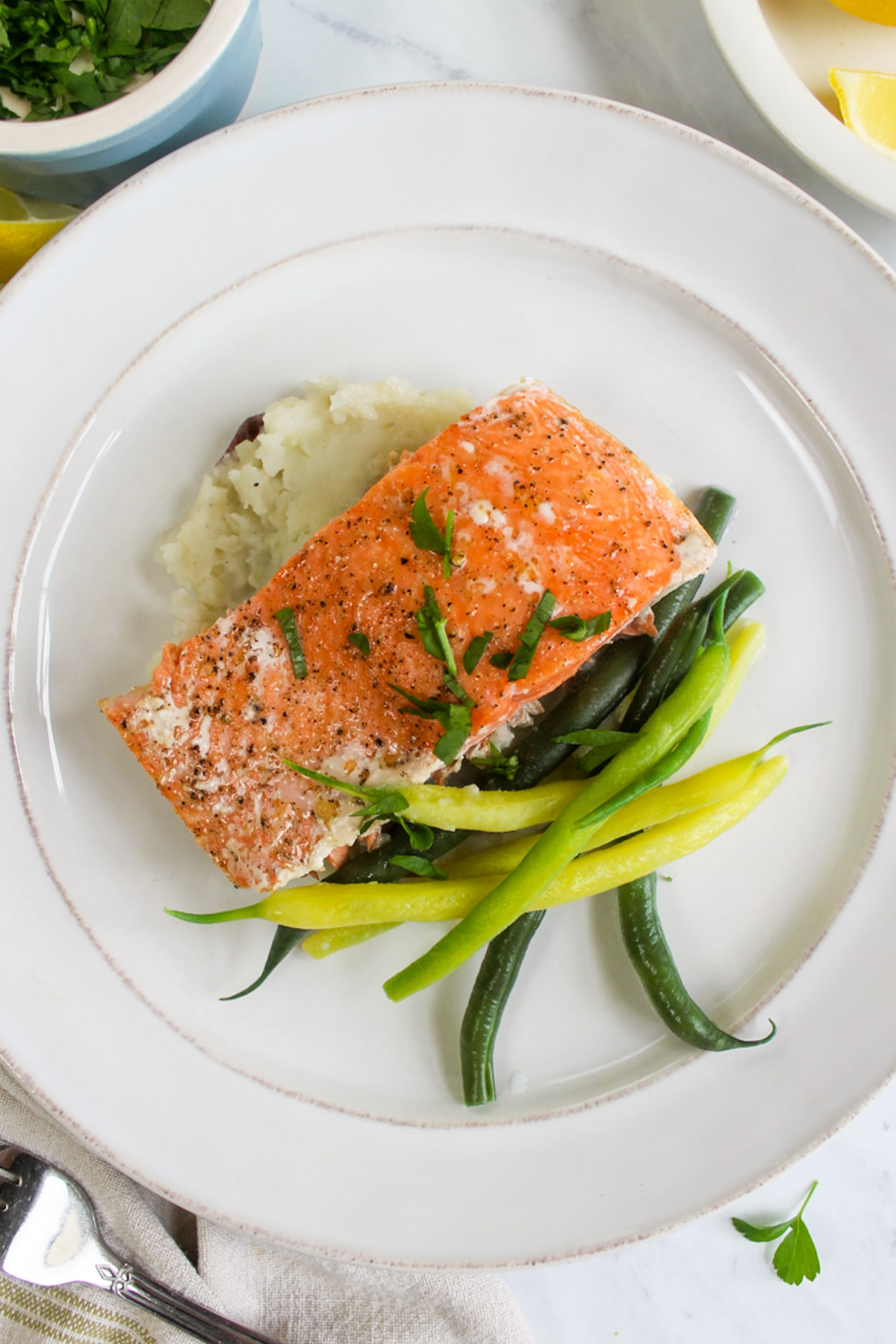
- My Basic Go-To Salmon Recipe! - Cooking salmon at home is easy with this basic oven roasted method, full of tips and tricks to get your salmon perfect every time! No fancy sauces or complicated seasonings, the fish just speaks for itself! Wild-caught salmon, seasoned only with olive oil, salt and pepper, it's a delicious and healthy dinner favorite!
- If you LOVE Salmon, try my Blackened Salmon Rice Bowls with Mango Salsa, this Salmon Zucchini Orzo Pasta, and use your leftovers for Weeknight Salmon Avocado Bagels!
Jump to:
Simple Ingredients
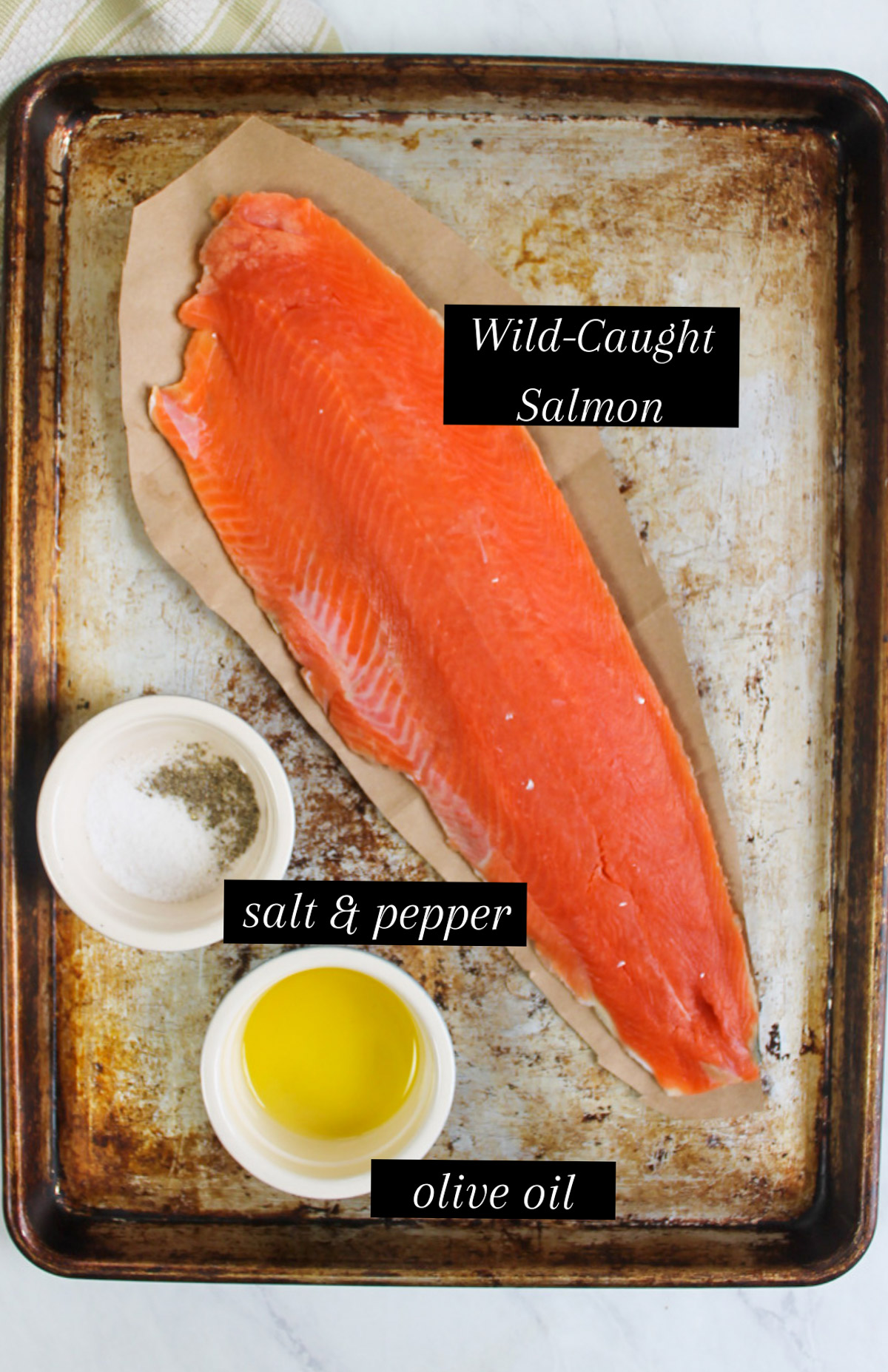
- Wild-Caught Salmon - The quality of salmon can vary drastically depending on where you live and where you buy your fish. Here in the Midwest, I do my best to get the highest quality and usually go for Wild Alaskan Sockeye Salmon. I think wild caught salmon is far superior to farm raised salmon (that just doesn't seem right does it, farm-raised salmon?). I've even found that our local co-op has really great quality frozen wild Alaskan salmon for a very reasonable price. A filet of salmon in the freezer makes for a great back-up dinner!
- Olive Oil, Salt, and Pepper - This wild caught salmon recipe is totally basic! The quality of the fish speaks for itself, seasoned very simply with just olive oil, kosher salt and freshly ground black pepper. Don't skimp on the salt, it enhances the natural flavor of the fish.
Step-By-Step Instructions
Step 1 - Preheat your oven to 400° convection bake. Cooking salmon in a convection oven means the oven fan is blowing the hot air around, evenly and quickly cooking the fish.
Cut a brown paper bag to roughly fit under your salmon filet and place it on a sheet pan. This step is optional, but makes it really easy to serve the salmon while leaving the skin behind stuck to the paper bag. Easy clean up too!
Score the salmon with a serrated knife in serving size pieces. Slice down through the flesh but leave the skin in tact. This makes it easier to cut out individual pieces without wrecking the appearance of the fish.
Rub the salmon with olive oil and season generously with salt and pepper.

Step 2 - Roast salmon in the oven for 11 to 15 minutes. The roasting time will vary depending on the thickness of fish. Check salmon after 10 minutes.
If you scored the salmon, you will be able to look in the score cuts to see if it looks done. You can also test with a fork by pulling apart a piece to see if it flakes.
Salmon doneness is a personal preference, some like it more medium rare, some well done. So, the best thing to do is check it after 10 minutes and then do a couple more minutes and check again.
It is done when the red color has turned light pink and it flakes easily, but don't overcook it! Allow the salmon to rest on the stovetop for 3 to 5 minutes before serving.
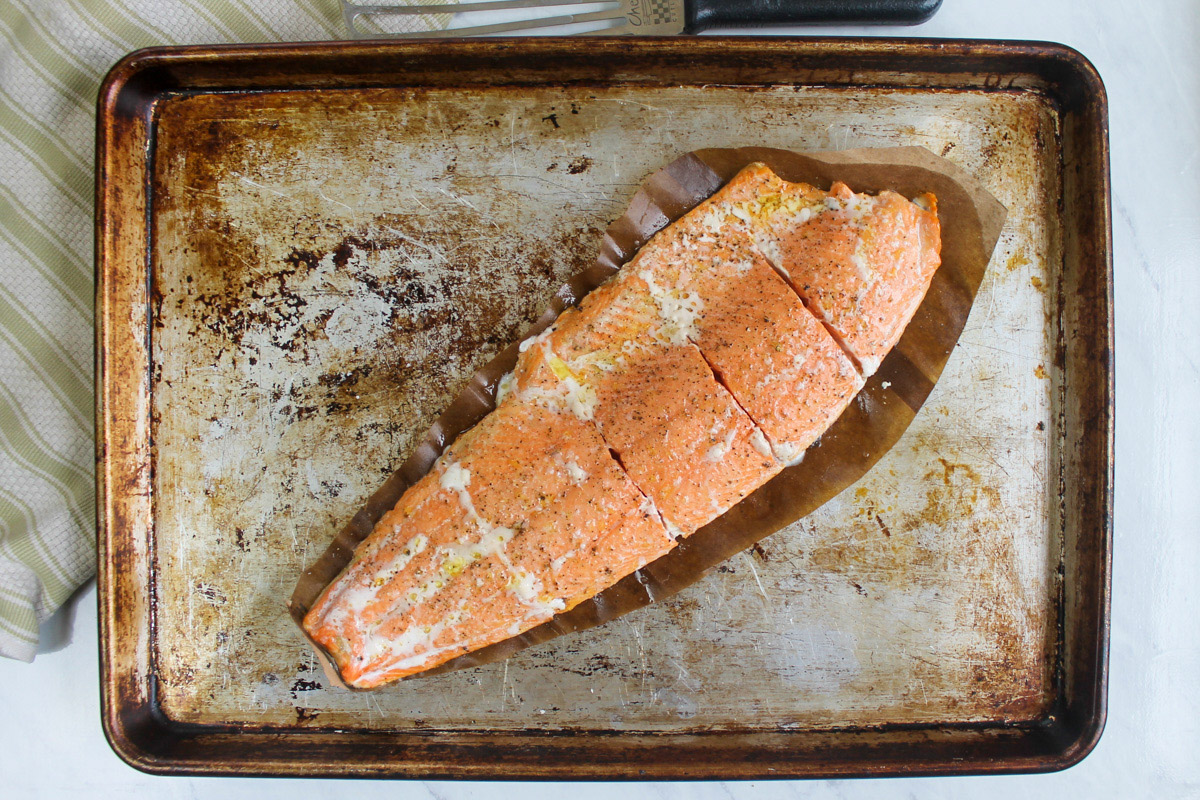
Step 3 - To serve, use a metal spatula to carefully remove the pre-cut pieces. The salmon skin will stick to the brown paper bag and the flesh will easily pull off.
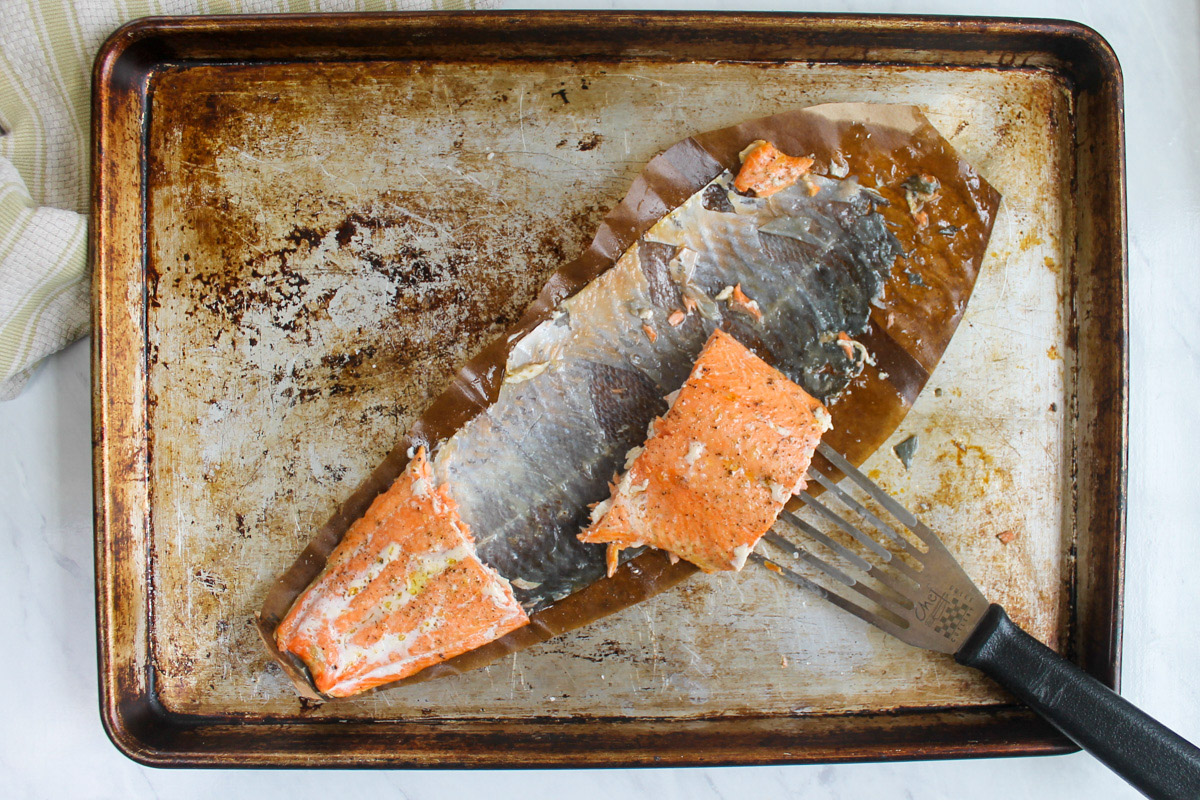
Tips for Perfect Salmon
- The Brown Paper Bag Trick - When roasting a piece of 'skin on' salmon in the oven, cut a brown paper bag to fit under the salmon while you roast it. The skin sticks to the bag while the flesh pulls right off to serve. This also makes the pan much easier to clean without that baked on skin!
- Score the Salmon - Using a serrated knife, score the meat into serving size pieces before cooking it, slicing down through the flesh but leaving the skin intact. This makes it easier to serve individual pieces without having ragged edges on your servings.
- Let it Rest - Like a lot of meats, always let your salmon rest on the stovetop 3 to 5 minutes after cooking. If it's a really large piece, you can cover it with foil while it rests a bit longer. I doubt if it redistributes the juices like beef, but the salmon continues to cook as it rests. You can slightly undercook the fish while roasting with the idea that it will finish cooking while it rests. It helps avoid overcooking the fish which is about the worst thing you can do if you love salmon!
- Buy Wild-Caught Salmon vs. Farm Raised - I like to buy Wild-Caught Alaskan Salmon and always look for the best quality. Fish has a short shelf life, look for the freshest you can find! Ask the guys behind the counter, they can be really helpful! Check your local co-op, I have found great quality Wild Caught Sockeye Salmon that is frozen for much less expensive than fresh.
- Don't Overcook Salmon - Oven temperature and the thickness of the salmon can make the cooking time really vary. Always start with just 10 minutes, you can always put it back in the oven to cook longer but once it's overcooked, you can't undo it!
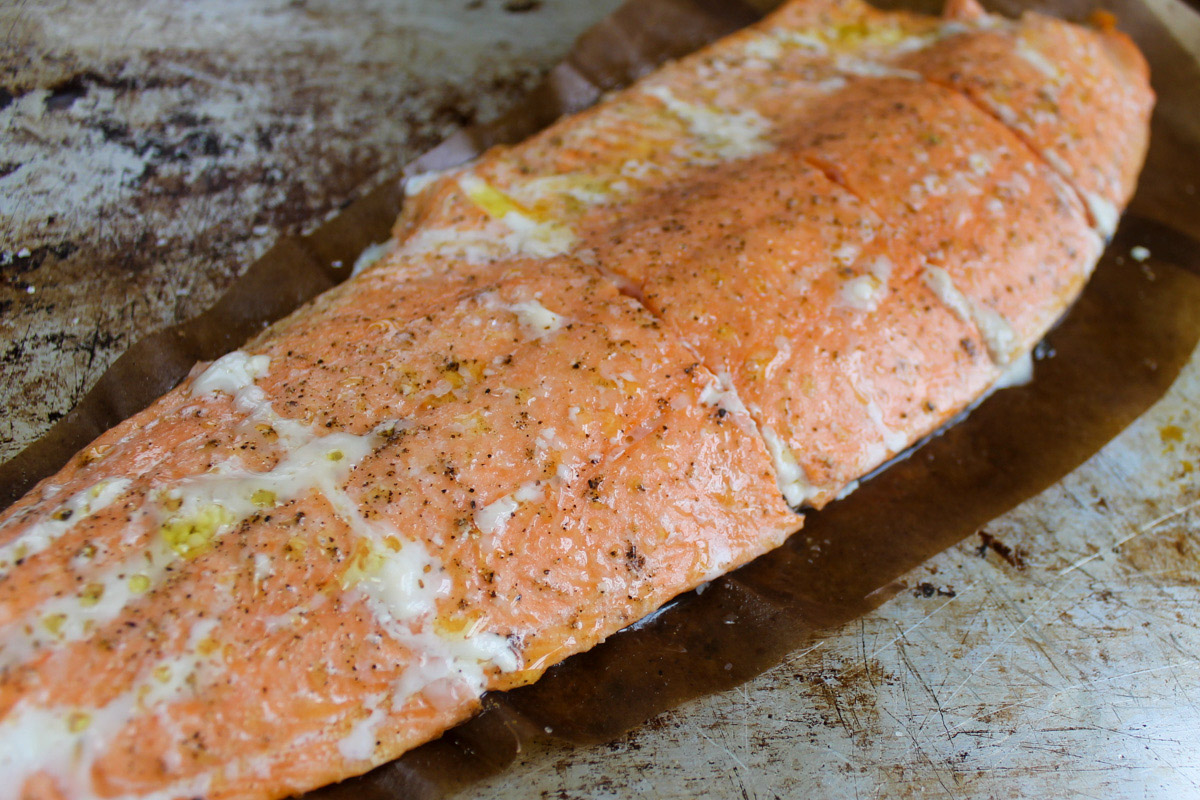
What to Serve with Roasted Salmon
Roasted Salmon and vegetables is a great combination, we like Rosemary Garlic Mashed Potatoes and a simple veggie like Buttered Green Beans and Carrots or Broccoli Au Gratin.
Try roasting a big pan of chopped sweet potatoes, cauliflower, carrots, onions, or whatever you like and then putting the salmon in the hot oven to cook when the veggies are almost done.
Roasted Salmon is also great with these side dishes:
- Roasted Potatoes with Broccoli
- Roasted Sweet Potato Slices is Garlic Honey Butter
- Green Bean Au Gratin
- Mashed Butternut Squash
- Mashed Sweet Potatoes
- Roasted Carrots and Brussel Sprouts
- Balsamic Glazed Asparagus
- Easy Charred Corn on the Cob
- Parmesan Kale Chips
- Panzanella Bread Salad with Cherry Tomatoes
- Italian Mixed Greens Salad with Crispy Prosciutto
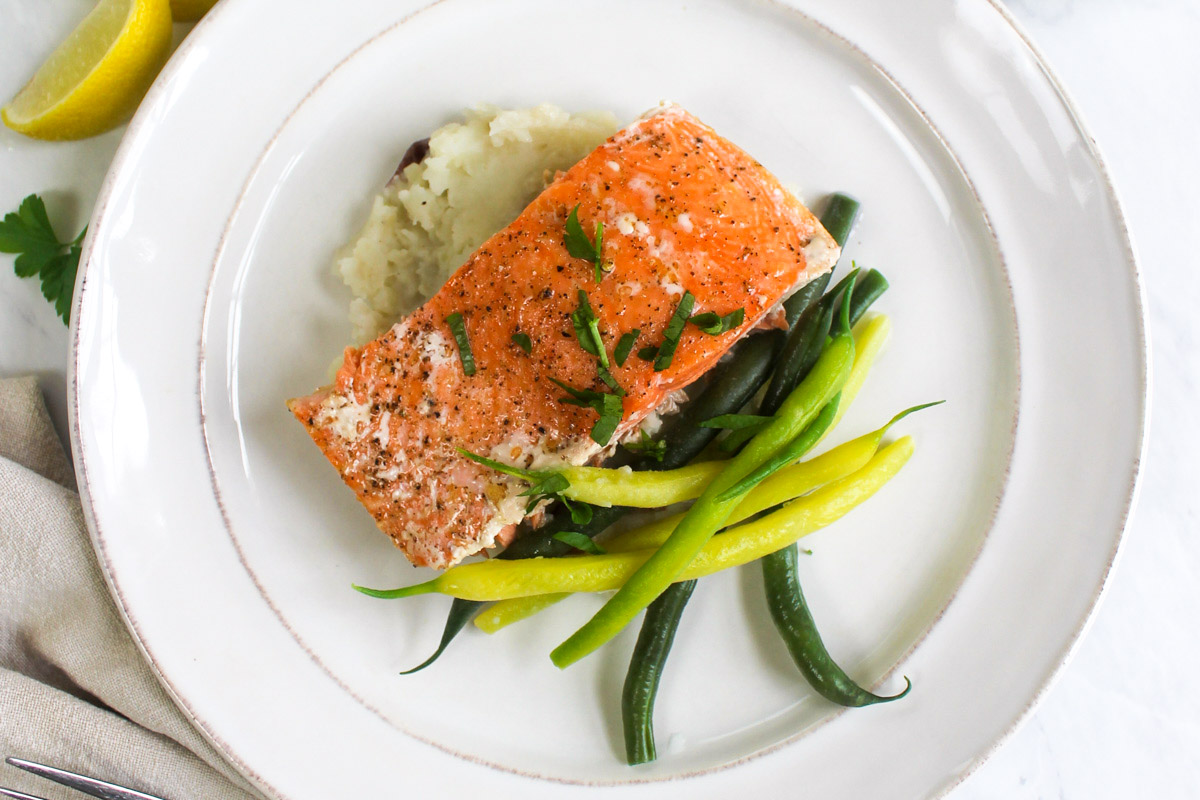
Recipe FAQs
This wild caught salmon recipe is seasoned very simply with olive oil, salt and pepper. These are important seasonings, but you can also add fresh chopped herbs, a squeeze of lemon juice, or a pat of butter mixed with minced garlic and herbs over the cooked salmon as it rests.
Yes! Farm-raised salmon just doesn't sound right to me! They are often caged, fed fish pellets, given antibiotics, and usually farmed in the Atlantic Ocean. Wild-caught salmon, usually from the Alaska area, are eating a natural diet and their meat is full of healthy protein and omega 3 fatty acids.
Yes! Whether you buy fresh or frozen salmon, look for quality! Dark red fleshed, wild-caught salmon is best whether it is fresh or frozen. Just thaw overnight in the fridge and cook according to the recipe.
More Favorite Recipes!
Rate this Recipe!
Leave a star rating and a comment below! I'd love to hear how it turned out!
Join the Sungrown Kitchen Email List for all the latest recipes delivered straight to your inbox! Find me on Pinterest too!
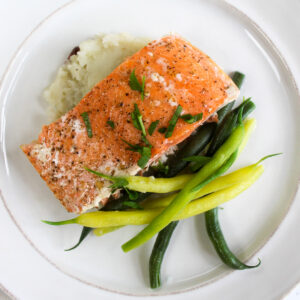
Simple Roasted Wild Caught Salmon
Hit the stars to rate this recipe!
Print Pin RateIngredients
- 1 pound wild caught salmon filet or a little larger
- 2 teaspoons olive oil
- ½ teaspoon kosher salt
- 8 grinds fresh black pepper
Instructions
- Preheat oven to 400° convection bake.
- Cut a brown paper bag to roughly fit under your salmon (this step is optional, but makes it really easy to serve the salmon while leaving the skin behind stuck to the paper bag, easy clean up too!).
- Place the salmon, skin side down, on the paper bag, on a sheet pan. Check for and remove any pin bones with a small kitchen pliers. Optional - using a serrated knife, score the salmon into serving amount pieces, cutting down through the meat but leaving the skin in tact, this allows for easy serving.
- Drizzle with olive oil and rub onto the entire salmon with your hands, then season with salt and pepper.
- Roast in the oven for 11 to 15 minutes. The roasting time will vary depending on the thickness of the fish. Check salmon after 10 minutes, if you scored the salmon, you will be able to look in the score cuts to see if it looks done. You can also test with a fork pulling apart a piece to see if it flakes. Salmon doneness is a personal preference, some like it more medium rare, some well done, so the best thing to do is check it after 10 minutes and then do a couple more minutes and check as you go. It is done when it flakes easily but don't overcook it! Allow the salmon to rest on the stovetop for 3 to 5 minutes before serving.
- Serve with any sides, mashed potatoes, roasted or blanched green vegetables, salad, or crusty bread.
Notes
- The Brown Paper Bag Trick -When roasting a piece of 'skin on' salmon in the oven, cut a brown paper bag to fit under the salmon while you roast it. The skin sticks to the bag while the flesh pulls right off to serve. This also makes the pan much easier to clean without that caked on skin!
- Score the Salmon - Using a serrated knife, score the meat into serving size pieces before cooking it, slicing down through the flesh but leaving the skin intact. This makes it easier to serve individual pieces without having ragged edges on your servings.
- Don't Overcook Salmon - Oven temperature and the thickness of the salmon can make the cooking time really vary. Always start with just 10 minutes, you can always put it back in the oven to cook longer but once it's overcooked, you can't undo it!


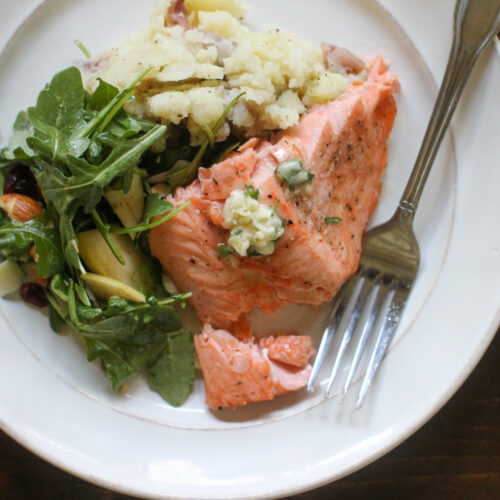
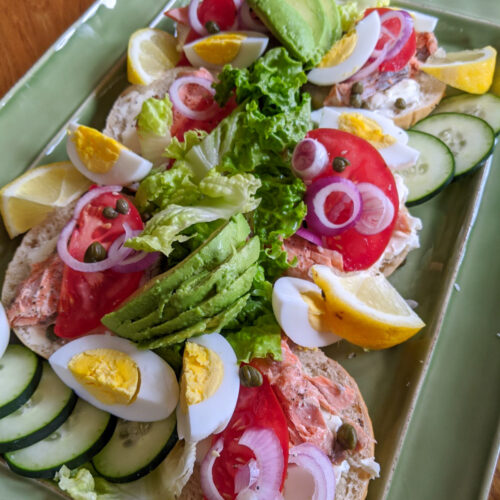
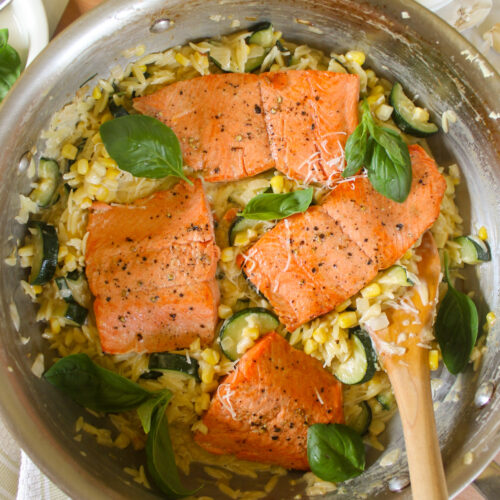
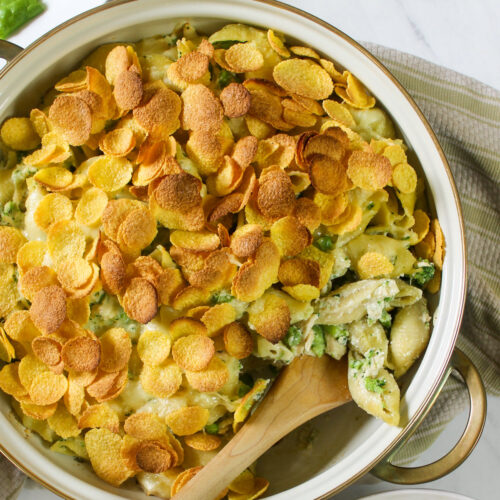
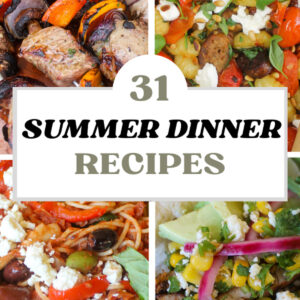
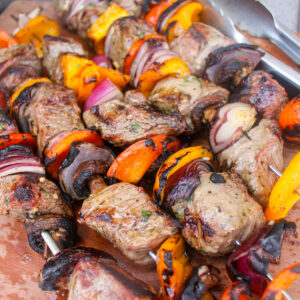

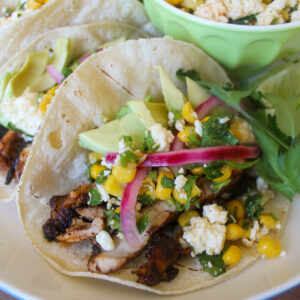
Christy Heitman says
Easy and lovely recipe!
Meryl Downing says
So glad you liked it Christy!
Myra Ragan says
Delicious. Made recipe exactly as written with exact ingredients. I thought I had too much pepper but it's a wonderful seasoning. The Brown Paper Bag trick is marvelous - and while not all of the skin stuck to the bag, a LOT of it did; made it so much easier to serve. Part of it is learning exactly where to put the spatula to lift the salmon away from the skin. I will be making this recipe again and again. THANKS so much from Virginia!
Meryl Downing says
Thanks Myra! I love that brown paper back trick too! So glad you like it!
Judith Gustafson says
But … we like the skin! I can’t imagine not eating it. Wish I knew what folks think is wrong with it …
Meryl Downing says
Hi Judith,
Interesting, yes you can eat the skin, I know a lot of people don't like it! If you do like to eat the skin, then the paper bag trick is not for you.
Linda says
This recipe was quick (I already had all ingredients), easy and tasty. Cooking the salmon on my GF grill left it dry, so I wasn't going to buy more, but roasting it was so much better! I will buy more salmon and use this recipe again and again! Thanks for sharing!!